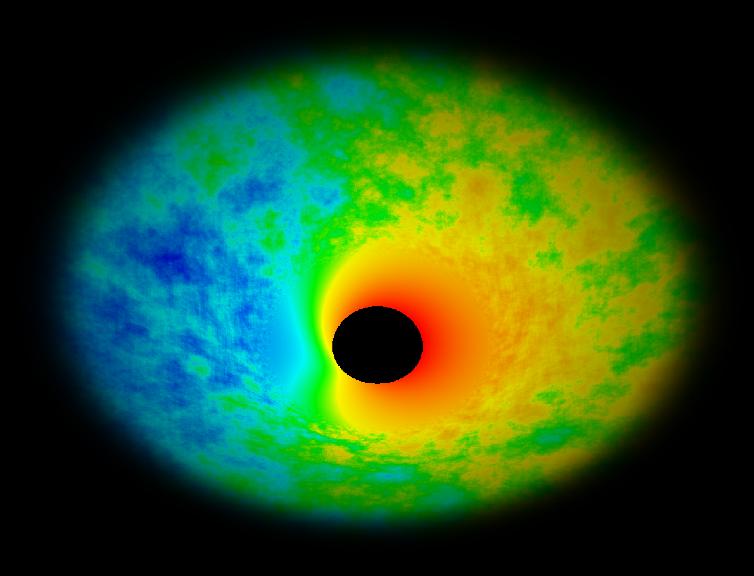Black Hole Simulation

Image Credit: Bromley, Miller & Pariev 1998, Nature 391, 54."
A model turbulent Schwarzschild disk is shown here. Turbulence is required to help disk material lose angular momentum so it can accrete onto the hole. In doing so it may generate the powerful radiation which we observe in quasars and active galaxies. This disk also has finite thickness associated with the size of turbulent cells (patches of similar color) in the outer disk. The freefalling material inside 6 R_g is smooth in texture; there, no turbulence is required for accretion onto the hole.
The colors indicate the frequency shift due to orbital and turbulent
motions, and general relativisitic effects. Such a disk is the most likely
origin of the broad Fe line.
Get the high resolution TIFF format version.
Curator:
HEASARC Guest Observer Facility
If you have any questions concerning ASCA, visit our Feedback form.

